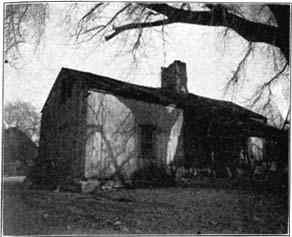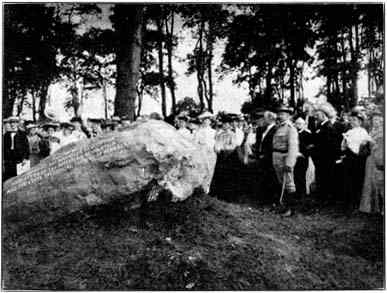|

Oldest Mission Church
Indian children rejoiced the heart of the
missionaries. The first convert, a boy of twelve years,
was baptized by Mr. Merrill April 20, 1834. For the first
eighteen months Mr. Merrill applied himself to the task
of learning the Otoe language that he might preach to the
people in their own tongue. On April 1, 1835, a contract
between Moses Merrill and John Daugherty provided that
the missionary was to teach the Otoe and Missouri
children of both sexes and receive therefor the sum of
$500 per year from the government. The same year the
Baptist missionary society, which had sent out Mr.
Merrill, made an appropriation of $1,000 to erect mission
buildings at the Otoe Agency about six miles above the
mouth of the Platte where the main Otoe village had been
moved. In 1834 appeared the first Nebraska book, a little
pamphlet of fourteen pages containing familiar hymns
translated into the Otoe language by Mr. Merrill. It was
printed at the Shawanoe (Baptist) Indian Mission at
Shawanoe, Missouri. For the next five years the life of
Mr. Merrill was crowded with the labors of both teacher
and missionary. His diary (a copy of which is among the
archives of the state historical society) is filled with
incidents of frontier life, but most of all with the
missionary's struggles against the indifference of the
Indians and the terrible effects of trader's whisky in
the tribe. The Otoes would exchange the furs of a whole
year's chase for a few tin cups of poor whisky
adulterated with water. Over and over on nearly every
page is the record of more whisky brought into camp with
the acompaniment (sic) of drunken stabbings and
shootings. At one time the missionary when on a visit at
Roubidoux's trading post writes: "This is not the house
of God nor the gate of heaven. It is rather the house of
Satan and the gate of Hell. Eight Otoes arrived who had
come sixty miles to exchange their furs for whisky." In
the summer of 1838 Mr. Merrill spent several weeks with
the tribe on their summer buffalo hunt. February 6, 1840,
the missionary pioneer passed away and the Otoes mourned
the friend they called
"The-One-Who-Always-Speaks-The-Truth." His son, Rev. S.
P. Merrill, born July 13, 1835, at Otoe Mission was the
first white child born in Nebraska--so far as known. In
October, 1834, there arrived at Bellevue Rev. Samuel
Allis and Rev. John Dunbar, sent out by the Presbyterian
churches. They met the representatives of the Pawnee
nation at Bellevue and after a council with them Mr.
Dunbar went to the Grand Pawnee village while Mr. Allis
accompanied the Pawnee Loups--the first missionaries to
the Pawnee nation. Both these ministers lived and lodged,
ate and hunted, with the tribe, for the next two years.
During that time they acquired the Pawnee language and
made friends of their Indian brethren. In 1836 Mr. Allis
married
|





